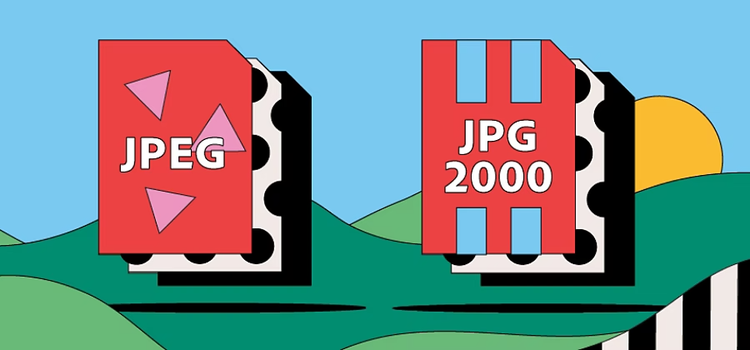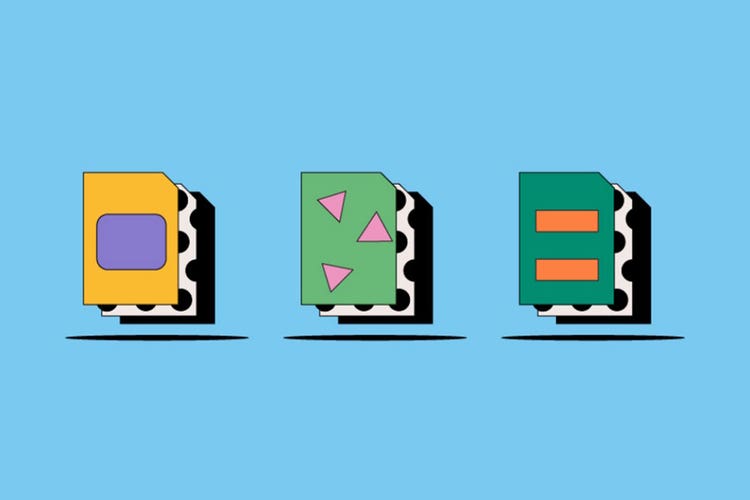PHOTOGRAPHY
JPEG vs. JPEG 2000.
JPEGs are one of the most popular image file types, widely used for sharing and uploading visual content online — unlike JPEG 2000s. What do the JPEG and JPEG 2000 formats have in common and which one should you be using? Read on to discover the main similarities and differences between JPEG and JPEG 2000.

https://main--cc--adobecom.hlx.page/cc-shared/fragments/seo-articles/get-started-notification-blade
What is a JPEG file?
JPEG stands for Joint Photographic Experts Group. Launched in 1986, JPEG has slowly become the most popular imaging format. One of its most common uses is for uploading and sharing digital images over the web. While its lossy format means you lose some quality from the original image, JPEGs are usually of a good enough quality for digital use. One of the big benefits of JPEGs is that they’re compatible with practically all image processors and browsers.
What is a JPEG 2000 file?
Like the JPEG, the Joint Photographic Experts Group created the JPEG 2000. The intention was for JPEG 2000 to be an improved version of the JPEG file, with a better compression ratio producing higher-quality images. Its design delivers lossless compression
rather than the JPEG’s lossy compression
which retains more image data during the conversion process. Because it’s a more complex file type that fewer software applications support, JPEG 2000s aren’t as popular as JPEGs.
What is the difference between JPEG and JPEG 2000 files?
JPEG and JPEG 2000 may share the same name, but they are two very different image file types. Let’s explore these differences so you can choose the best format for what you need.
Image resolution.
Image quality is the first notable difference between JPEG and JPEG 2000. Using a sophisticated encoding method, JPEG 2000 provides a superior image resolution compared to JPEGs. This is because it can compress files without compromising as much visual data through lossless compression
while also leaving the option open for high-quality lossy compression if needed.
Because JPEG 2000 files offer lossless compression, they can be larger than JPEGs — which also means they can take longer to send, upload and view online.
Compression.
JPEGs offer lossy compression, which means that users saving files as JPEGs will lose some visual data from their original image. Some might think that quality loss is a fair trade for JPEG’s small file sizes
but others might not realise they can get both high-quality and reasonable file sizes with JPEG 2000.
The JPEG 2000 offers users lossless or lossy compression options, depending on how much detail you want to retain. Lossless compression will produce comparatively higher-quality images.
With its high compression ratios, a JPEG 2000 can also compress an image up to 200% more than a JPEG while maintaining the same quality compared to a file of the same size.
Encoding.
Another major difference between these two formats lies in the code. The JPEG 2000 is based on a different code than JPEG and this new code isn’t backwards compatible. This means that older hardware can’t use JPEG 2000 without modification. When the JPEG 2000 made its debut, developers were reluctant to use it because they would also need to code for JPEG, adding to their workload. Without widespread support from developers, everyday computer users didn’t encounter the new JPEG 2000 file type with the same frequency as the JPEG, which slowed its adoption rates.
Additionally, JPEG 2000 used more RAM than its predecessor, the JPEG. At the time of the JPEG 2000 release, the average computer had only 64 MB of RAM. While this isn’t an issue for most contemporary computers, it was yet another factor that held JPEG 2000 back from gaining widespread popularity.
JPEG vs. JPEG 2000 files: frequently asked questions.
Is JPEG or JPEG 2000 better?
Is JPEG 2000 still in use?
JPEG 2000 is still in use
but it’s one of the least adopted image formats. This has been the case throughout its history. Camera manufacturers and websites were reluctant to accept the JPEG 2000 format until it became more popular
effectively stunting its growth.
Do all browsers support JPEG 2000?
Should I save files as JPEG or JPEG 2000?
JPEGs and JPEG 2000s have different strengths and weaknesses, so you may choose to save in one format or another depending on your requirements.
- Save as JPEG if you need universal browser support and don’t mind mediocre image quality — for example, if you’re uploading your image to the web or sending it via email.
- Save as JPEG 2000 if you want lossless compression (that is, you want to retain as much image quality as possible) or better lossy compression than JPEG.
